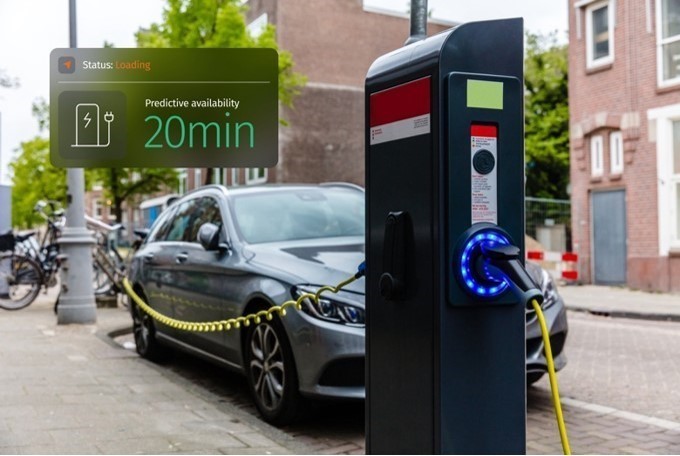Every aspect of society, business and governance can soon benefit from more accurate and accessible spatial intelligence data
Keeping digital maps up-to-date has been a massive challenge for almost firm investing in this space.
However, things are about to improve, and the new technology even allows users to create their own private maps for use in navigation on electric vehicles (EVs).
DigiconAsia.net finds out more from Abhijit Sengupta, Senior Director and Head of Business (Southeast Asia and India), HERE Technologies, the firm behind the breakthrough.
DigiconAsia: Please start off by explaining what spatial intelligence platforms are?
Abhijit Sengupta (AS): Spatial intelligence platforms (location technology) are software systems that analyze and visualize geospatial data to provide valuable insights and decision-making for a wide range of industries, including the automotive industry.
DigiconAsia: Which industries benefit the most from location technology, and how can the EV industry benefit?
AS: The industry that benefits a lot from the use of location technology and platform is transportation and logistics (T&L).
Location data has the power to help T&L firms to optimize routes, manage fleets and track shipments. By analyzing location data, these platforms can identify the most efficient routes and help firms reduce delivery times and costs.
When it comes to making EVs more viable and user friendly, urban planners use spatial intelligence information to decide where to place charging points — by identifying areas where the charging infrastructure is needed the most. It can also be used by others to predict the likelihood of an EV public charge point being available in the future.
In another instance, location technology is also enabling EV businesses in fleet management. By tracking the location and status of EVs in real-time, fleet operators can optimize route planning and schedule predictive maintenance. By monitoring the battery health of the EV fleets; user driving patterns and environmental conditions, predictive maintenance systems can alert drivers and fleet managers when maintenance is needed. This will also help to reduce downtime and enhance overall efficiency.

In general, spatial intelligence benefits can be reaped by a broader range of usage scenarios to:
- Optimize fleet operations: used for reviewing, analyzing and understanding fleet performance for real-time decision-making and forecasting, so fleet managers can plan and execute delivery shifts in one place.
- Gain full visibility through real-time tracking: firms can use the technology to track their vehicles in real-time to handle possible delays, monitor delivery progress, adjust routes in response to traffic conditions or other unforeseen circumstances, and improve overall efficiency.
- Boost driver productivity and efficient routing: use the technology to generate routes based on truck size, cargo, and driver experience for greater safety and compliance.
In general, customer experiences across all industries can be improved with the use of location technology. Examples include retail, ride-hailing, logistics, manufacturing, and automotive sectors.
DigiconAsia: What are the major trends and innovations on spatial intelligence platforms in the Asia Pacific region (APAC)?
AS: As home to some of the world’s most ambitious smart city initiatives in China, Singapore and South Korea, it is not uncommon for location technology to be used to improve traffic management, optimize public transportation and other aspects of urban planning.
For instance in Japan, location intelligence has benefited citizens and tourists in the Aizu region in the Fukushima area. Commuters were finding it difficult to use the services of the private transit company serving the region because the static timetables posted at stations or on the website were insufficient. However, following the introduction of location technology, riders were able to have dynamic visibility of the schedule and progress of even bus at any given time, including delays or seasonal and temporary changes to any services.
Similarly, as South-east Asia gears up to form an EV hub globally, location intelligence will be critical for achieving higher EV market penetration rates, through the development of localized digital EV ecosystems that proactively feed information and solutions to drivers.
Going forward, location technology also needs to go beyond supporting only electric four-wheelers (E4Ws). Local nuances such as traffic and weather conditions are also useful for other types of EVs like electric two-wheelers or EVs used by fleet management companies — both of which tend to take different routes compared to E4Ws.
DigiconAsia: What are the innovations and solutions in location technology that can make spatial intelligence even more accessible and powerful?
AS: First, a novel technology called Unimap will be coming online in 2024. It is a new computing architecture that:
- Automates map data processing and map creation wherever possible and logical: For example, it uses AI models to automate the processing of 500m kilometers of vehicle probe and sensor data every hour, to extract map features such as 2D and 3D positioning of road signs, to validate speed limits and to build missing road geometry.
- Conflates multiple types of data: The technology transforms data from a wide variety of sources into map content. Sources range from vehicle cameras and LiDAR to overhead imagery and IoT data.
- Produces a unified map: All standard definition, high definition and Advanced Driver-Assistance System (ADAS) data can be aligned into one single semantically consistent digital representation of reality; in a first for the industry, this is seamless access to a unified catalog of the data needed for navigation, automated driving and intelligent speed assistance. Different data types are aligned thanks to an extendible unified map content data model.
- Enables changes detected in the physical reality to become visible in the map within 24 hours, stores all data in a single environment for ready accessible 24/7
- Enables customers to combine and connect data sets: businesses can bring in their own location data and information from other sources such as crowdsourced content, to create new products in just hours.
Second, advances in location technology will be empowering more users to convert huge amounts of data into standardized map content to enables businesses to create, deploy and scale location-centric data, products, services, and applications. As a Data-as-a-Service, this kind of location technology provides access to location-domain-specific services and content, in addition to tools and capabilities for advanced data modeling; API services; pipeline configuration; and advanced analytics.
For example, by mapping their private facilities, businesses with logistics operations can enable more intelligent routing and accurate estimated time of arrival (ETA) predictions. If a journey begins inside a ferry terminal and ends inside a factory, calculations for estimated arrival times should represent the true expected travel time, not only the portion of the operation completed on public roads.
Finally, another advancement in location technology will support ‘location contextualization’ of business data to uncover new insights. For example, this can involve observing fleet speed versus road speed limits to assess risk. Alternatively, a business could layer its private places and points of interest on a special map and activate a private search and routing algorithm that accounts for these new locations.

DigiconAsia thanks Abhijit for sharing his insights on this new technology.
